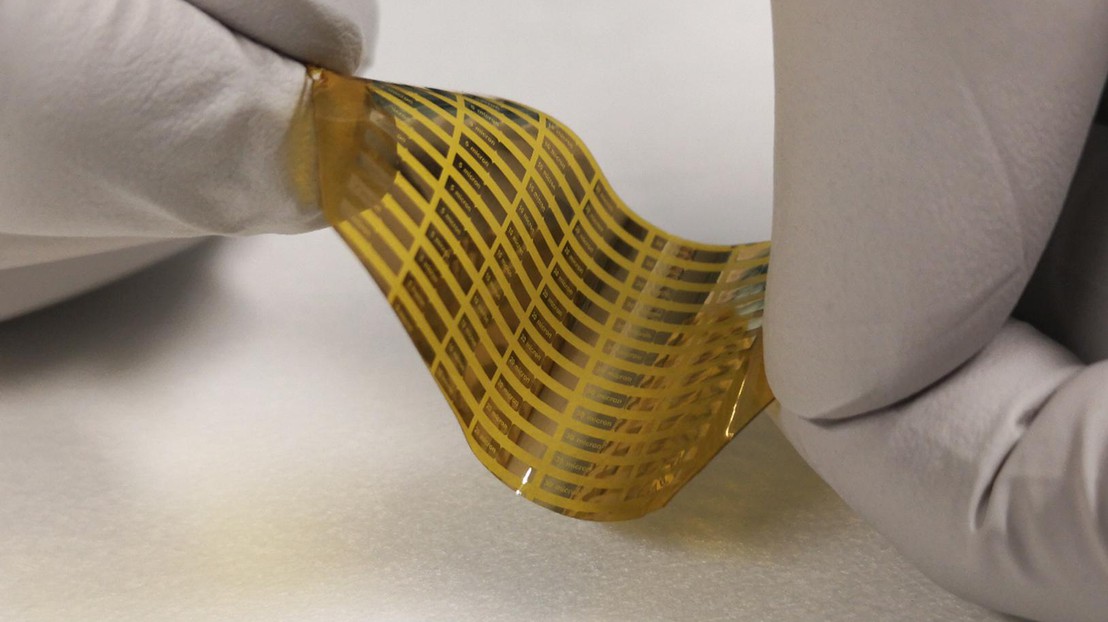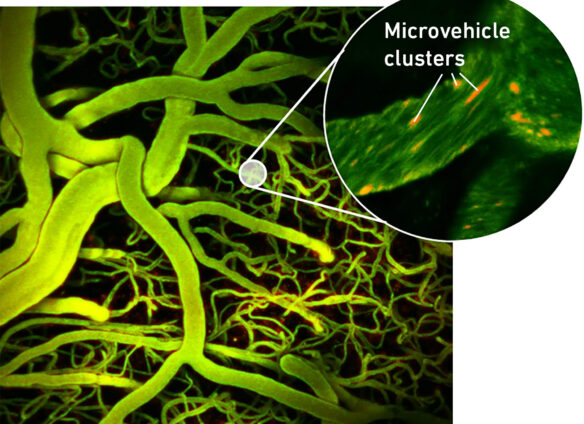Tokyo (SCCIJ) – A researcher team at the Swiss Federal Institute of Technology in Lausanne (EPFL) has developed a nano-device that operates more than ten times faster than today’s fastest transistors, and about 100 times faster than the transistors on regular computers.

The new nano-device developed by scientists in Switzerland enables the low-cost generation of extremely versatile waves (© EPFL).
Vast promises
The technological breakthrough is based on high-power terahertz waves. The team’s pioneering compact source, described in the magazine Nature, paves the way for untold new applications. For example, mounted on a chip or a flexible medium, the technology could one day be installed in smartphones and other hand-held devices.
Terahertz (THz) waves fall between microwave and infrared radiation in the electromagnetic spectrum, oscillating at frequencies of between 100 billion and 30 trillion cycles per second. They are a type of non-ionizing radiation, meaning they pose no risk to human health. The technology is already used in some airports to scan passengers and detect dangerous objects and substances.
These waves can penetrate paper, clothing, wood and walls, as well as detect air pollution. THz sources could revolutionize security and medical imaging systems. The high-power picosecond operation of these devices also hold immense promise to some advanced medical treatment techniques such as cancer therapy. What’s more, their ability to carry vast quantities of data could hold the key to faster wireless communications.
How it works
THz waves have not widely been used because they are costly and cumbersome to generate. But the new technology developed by the EPFL researchers could change all that. The team at the Power and Wide-band-gap Electronics Research Laboratory (POWERlab), led by Prof. Elison Matioli, built a nano-device that can generate high-power THz waves.
The compact, inexpensive, fully electric nano-device works by producing a powerful “spark,” with the voltage spiking from 10 V (or lower) to 100 V in the range of a picosecond. The device is capable of generating this spark almost continuously, meaning it can emit up to 50 million signals every second. When hooked up to antennas, the system can produce and radiate high-power THz waves.
Nanoscale fabrication
Conventional electronic devices are only capable of switching at speeds of up to one volt per picosecond – too slow to produce high-power THz waves. The new nano-device, which can be more than ten times faster, can generate both high-energy and high-frequency pulses.
“Normally, it’s impossible to achieve high values for both variables,” says Matioli. “High-frequency semiconductor devices are nanoscale in size. They can only cope with a few volts before breaking out. High-power devices, meanwhile, are too big and slow to generate terahertz waves. Our solution was to revisit the old field of plasma with state-of-the-art nanoscale fabrication techniques to propose a new device to get around those constraints.”
“These nano-devices, on one side, bring an extremely high level of simplicity and low-cost, and on the other side, show an excellent performance. In addition, they can be integrated with other electronic devices such as transistor. Considering these unique properties, nano-plasma can shape a different future for the area of ultra-fast electronics”, said Mohammad Samizadeh Nikoo, a PhD student at the POWERlab, who first-authored the article in the journal Nature.
Text: © Laure-Anne Pessina/EPFL (editing by SCCIJ)





























